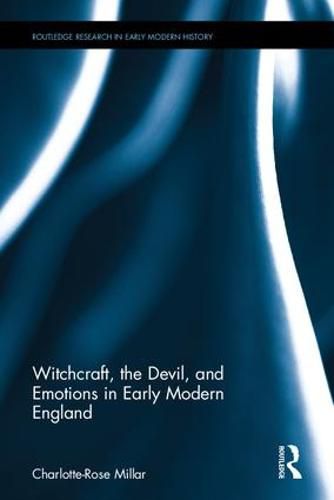Readings Newsletter
Become a Readings Member to make your shopping experience even easier.
Sign in or sign up for free!
You’re not far away from qualifying for FREE standard shipping within Australia
You’ve qualified for FREE standard shipping within Australia
The cart is loading…






This book represents the first systematic study of the role of the Devil in English witchcraft pamphlets for the entire period of state-sanctioned witchcraft prosecutions (1563-1735). It provides a rereading of English witchcraft, one which moves away from an older historiography which underplays the role of the Devil in English witchcraft and instead highlights the crucial role that the Devil, often in the form of a familiar spirit, took in English witchcraft belief. One of the key ways in which this book explores the role of the Devil is through emotions. Stories of witches were made up of a complex web of emotionally implicated accusers, victims, witnesses, and supposed perpetrators. They reveal a range of emotional experiences that do not just stem from malefic witchcraft but also, and primarily, from a witch’s links with the Devil. This book, then, has two main objectives. First, to suggest that English witchcraft pamphlets challenge our understanding of English witchcraft as a predominantly non-diabolical crime, and second, to highlight how witchcraft narratives emphasized emotions as the primary motivation for witchcraft acts and accusations.
$9.00 standard shipping within Australia
FREE standard shipping within Australia for orders over $100.00
Express & International shipping calculated at checkout
This book represents the first systematic study of the role of the Devil in English witchcraft pamphlets for the entire period of state-sanctioned witchcraft prosecutions (1563-1735). It provides a rereading of English witchcraft, one which moves away from an older historiography which underplays the role of the Devil in English witchcraft and instead highlights the crucial role that the Devil, often in the form of a familiar spirit, took in English witchcraft belief. One of the key ways in which this book explores the role of the Devil is through emotions. Stories of witches were made up of a complex web of emotionally implicated accusers, victims, witnesses, and supposed perpetrators. They reveal a range of emotional experiences that do not just stem from malefic witchcraft but also, and primarily, from a witch’s links with the Devil. This book, then, has two main objectives. First, to suggest that English witchcraft pamphlets challenge our understanding of English witchcraft as a predominantly non-diabolical crime, and second, to highlight how witchcraft narratives emphasized emotions as the primary motivation for witchcraft acts and accusations.